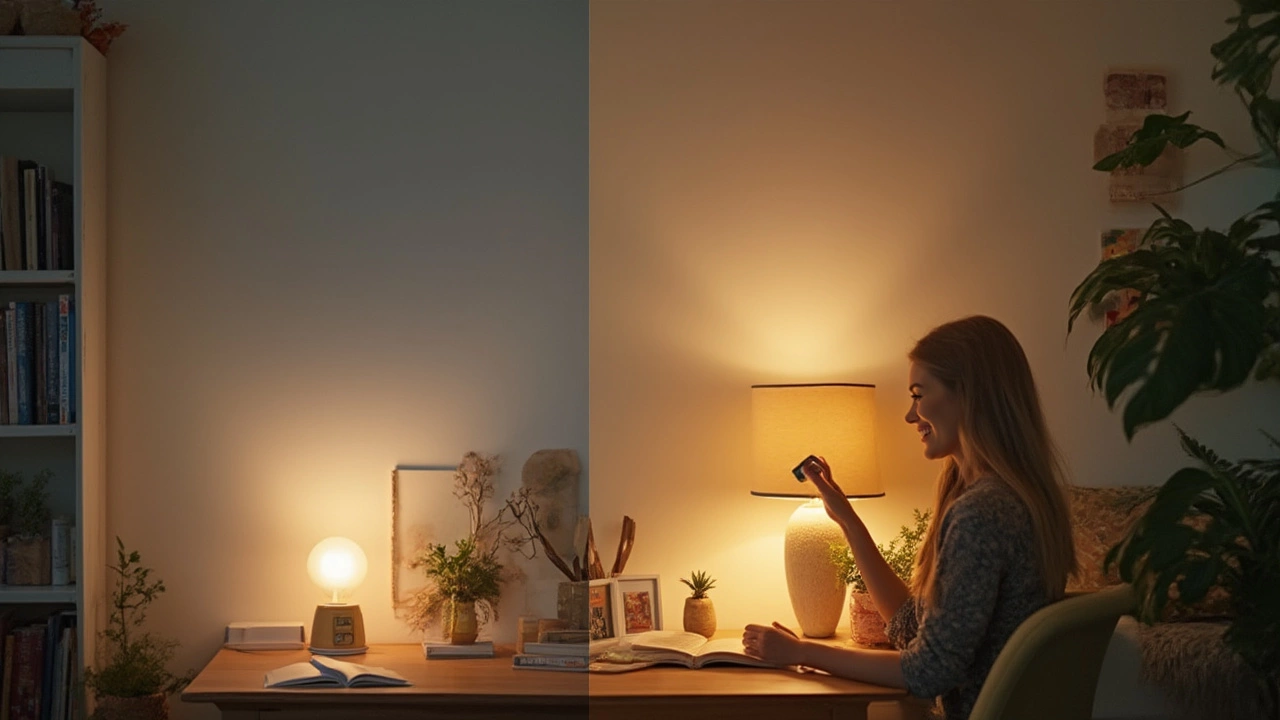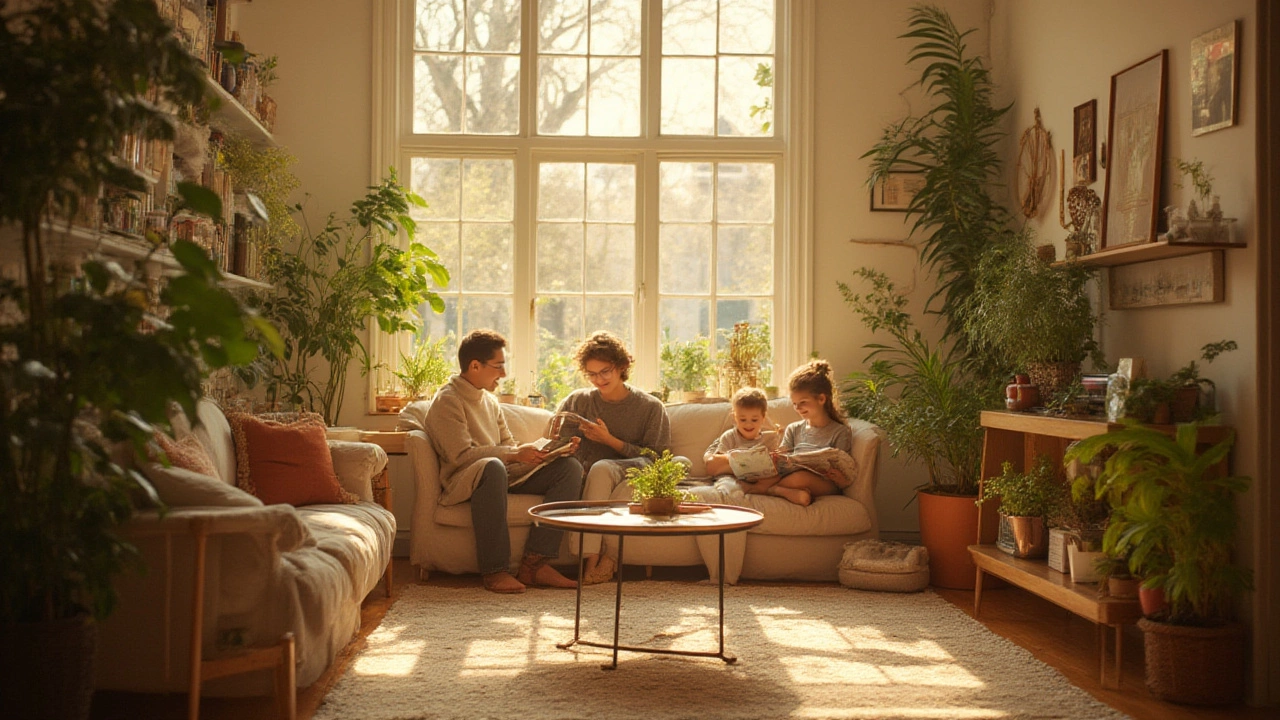Ever walk into a room and feel instantly brighter, more awake—maybe even a little happier? That’s no accident. Spaces soaked in natural light just make people feel good. Science backs this up: natural sunlight helps regulate your mood, focus, and even your sleep patterns. But we don’t all have massive sun-facing windows, and winter can be pretty dreary. So, what lighting comes closest to sunlight when the real stuff is scarce? The short answer isn’t hidden in high-tech gadgets or designer catalogs; it’s often about smart choices, the right bulbs, and knowing a tad about how light works. Let’s bust a few myths, dig into some facts, and see what actually makes light “natural.”
What Exactly Is Natural Light?
Let’s clear this up: when people say “natural light,” they mean the visible light that comes straight from the sun—and it’s a special blend. Sunlight is made up of the full spectrum of visible colors, plus some UV and infrared rays. That’s why colors look brighter, truer, and more alive in daylight. If you ever picked out a paint color in the store and it looked totally different at home, blame your indoor lighting. Sunlight’s color temperature averages about 5000 to 6500 Kelvin (K). That makes it a cool, almost bluish white, not warm yellow like a sunset or your average living room lamp.
Sunlight also has a super high Color Rendering Index (CRI), usually measured at 100. CRI tells you how well a light source makes colors appear compared to the sun. A CRI of 80 or above is pretty solid for most indoor jobs, but if you want to get as close to natural as you can, shoot for 90 or above. Big designers, photographers, and makeup pros obsess over this stuff for a reason—details matter. Here's a quick comparison of how common types rate:
| Type | Color Temperature (K) | CRI |
|---|---|---|
| Sunlight (noon) | 5000-6500 | 100 |
| Incandescent bulb | 2700-3300 | 95-100 |
| Standard LED | 2700-6500 | 80-90 |
| Fluorescent | 2700-6500 | 50-90 |
| Full Spectrum LED | 5000-6500 | 90-98 |
If you want your home to feel like a sun-filled greenhouse—and not a cave lit by ancient torches—number-hunting for color temperature and CRI is a good place to start.
Daylight Bulbs and Full-Spectrum Lighting—Are They Really Like Sunlight?
Stores and websites are packed with bulbs that promise “daylight,” “full-spectrum,” or “sunlight simulation,” but what’s real? Start with the basics: natural light is about matching two things—the color temperature of sunlight, and how well the light shows off true colors (that’s the high CRI). Full-spectrum bulbs go all-in by trying to cover every color in the visible spectrum, just like the sun does. Regular bulbs, especially old-school incandescents or cheap LEDs, often fall short. They tend to exaggerate reds and suppress blues, or vice versa, making everything look off. Ever tried picking out ripe avocados under that kinda light? Not fun.
Daylight bulbs are labeled with a color temperature close to 5000-6500K. They’re sharper, more energetic-feeling, and brightest in their white/blue tinge. But beware: not every “daylight” bulb actually has a great CRI. It’s possible to grab a daylight bulb that washes everything out, especially with lower-quality LEDs. Always check the packaging or online product info for details like CRI and color temperature. If a bulb lists these numbers, the company probably wants you to know it’s not junk.
The punchline? Full-spectrum LEDs and some higher-end fluorescents are the real MVPs. They light up rooms closer to what you’d get sitting by a big window on a sunny afternoon. These bulbs aren't just hype, either—lots of people suffering from seasonal affective disorder (SAD) use them for light therapy in the winter, and studies show they work. If you’re after a work setup that keeps you energized, these bulbs help big time. Place them above or near your workspace (not glaring in your face), and folks report less eye strain and better focus after a week or two. One trick: if you work weird hours or want to wake up naturally, try programmable smart bulbs. You can set them to mimic sunrise and sunset, which actually helps regulate your sleep/wake cycle through the day. Philips Hue and GE Cync are two brands that nail this.

How to Choose Bulbs and Fixtures That Feel Like Sunlight
Okay, you’re sold on the idea, but now the headache—choosing the right stuff. The lighting aisle looks like a puzzle you don’t want to solve, right? Here’s what you actually need to focus on.
- Color Temperature (Kelvin): Grab bulbs labeled 5000K to 6500K for that crisp, natural light vibe. Lower numbers look warm/yellow; higher numbers have a blue tint that's a bit too clinical for some rooms.
- CRI (Color Rendering Index): Shoot for 90+. Anything lower and you’ll notice a difference in the way colors look—especially skin tones, paint, and wood.
- Bulb Type: LEDs are the reigning champs for home use. They use way less power, last forever, and the best ones (full-spectrum LEDs) get really close to real sunlight. Fluorescent full-spectrum bulbs do a good job too, but they’re less common now.
- Lumens: This is just brightness. Your eyes like about 250-500 lumens for reading or working, and 1000+ for brightening whole rooms. Too dim and you’ll strain; too bright and it feels like a dentist’s office.
- Placement: Overhead lights bounce light all over the room like sunlight streaming in. Task lamps focused on your desk or counters work wonders when paired with the right bulb.
- Dimmers & Smart Controls: Being able to tweak brightness and color temperature throughout the day helps you match your needs—or just set the mood. Smart bulbs are perfect if you love gadgets.
For the living room, bedroom, or areas where you want cozy vibes, you might mix in some warmer (3500K-4000K) bulbs for evenings, then swap to daylight ones in the morning or for work. Don’t forget to pay attention to where natural sunlight already hits your rooms. Sometimes, just rearranging furniture to take advantage of natural light works even better than buying another bulb. Bringing in mirrors or lighter paint colors can boost whatever natural light you do get, making the space feel brighter with less effort.
Common Lighting Mistakes and Unrealized Benefits of Natural-Style Lighting
People love cozy lighting, but creating a sunlit feel indoors involves more than tossing in “white” bulbs and calling it a day. A big mistake is mixing bulbs with very different color temperatures—your living room suddenly looks like a patchwork quilt, with pockets of blue-white and yellow-orange. The fix here is obvious: pick a consistent color temperature for each zone or room, especially open-concept spaces.
Next, don’t ignore the ceilings and walls. Matte finishes reflect light better and make spaces feel open. Glossy finishes put off glare. Whiskers, my cat, always goes for the sunniest spot—and every time I paint a wall a bit lighter, it’s like he’s upgraded to a five-star spa. Animals instinctively crave sunshine for a reason: even small changes in lighting can boost energy, mood, and alertness.
If you have plants indoors, daylight bulbs help keep them alive during winter or in rooms without enough windows. They won’t replace the sun for serious plant lovers, but you’ll see happier leaves and maybe even more flowers. Another bonus is for anyone working long screen-heavy days. Swapping out warm, dim bulbs for daylight ones can actually cut down on drowsiness and give your workspace a crisp upgrade, no renovation needed. Some studies say workers under full-spectrum lights report less eye fatigue, fewer headaches, and are just more productive—that’s dollar signs for anyone working from home.
And for renters or those tight on budget, don’t stress about swapping every bulb. Prioritize the spots where you spend the most time: your desk, kitchen counter, bathroom mirror. Even a single well-placed daylight bulb can change the vibe entirely.
Here’s a quick cheat sheet for common lighting errors people make at home and how to fix them:
- Mixing warm and cool bulbs in one space – stick with one temperature per zone.
- Buying the cheapest LEDs – not all are created equal. Check CRI and color temperature.
- Using only overhead lights – add floor lamps or desk lamps to spread light evenly.
- Forgetting the power of paint and mirrors – lighter walls and mirrored surfaces multiply available light.
Getting your lighting to mimic sunlight isn’t just for design obsessives. It’s about dialing up your comfort, health, and even how attractive your home feels day-to-day. The right light can make you feel a little more awake, perk up colors, or help your next meeting not look like a crypt. If it’s good enough for Whiskers—and I’ve caught him snoring in every sunbeam—chances are your body will thank you for it, too.
